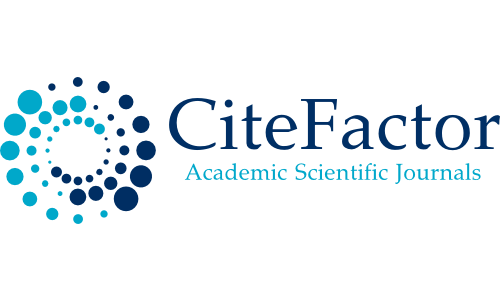The Journal of Advances in Computer Vision and Applications (JACVA) is a peer-reviewed journal dedicated to publishing high-quality research and innovations in the field of computer vision and its applications. JACVA provides a platform for researchers, practitioners, and academics to contribute to the advancement of computer vision theory, algorithms, methodologies, and applications.
JACVA welcomes submissions covering a wide range of topics related to computer vision and its applications, including but not limited to:
JACVA invites submissions of original research articles, survey papers, technical notes, and reviews that contribute significant advancements to the theory, methodology, and applications of computer vision. Interdisciplinary research and studies with practical implications for industry, healthcare, security, entertainment, and other domains are particularly encouraged.
JACVA is committed to maintaining the highest standards of academic excellence, peer review, and ethical publishing practices. The journal aims to provide a platform for scholarly exchange and dissemination of knowledge, facilitating collaboration and innovation in the field of computer vision and its applications.
Editor-in-Chief:
Dr. Salman Arafath Mohammed
Assistant Professor,
Electrical Engineering Department,
Computer Engineering Section,
King Khalid University College of Engineering,
Abha - Al Faraa, Asir Province, Saudi Arabia-61421.
salman@kku.edu.sa
Editor:
1. Dr. R. John Martin
Assistant Professor,
Department of Information Technology & Security,
College of Computer Science and Information Technology,
Jazan University, Al Maarefah Rd, Jizan Saudi Arabia- 45142.
jmartin@jazanu.edu.sa jmartin.in@gmail.com
2. Dr. Sumit Arun Hirve
Associate Professor of Computer Science,
MIT Art Design and Technology University,
Pune - 412201, Maharashtra, India.
sumit.hirve@gmail.com
3. Dr. Engr. Inam Ullah
Assistant Professor,
Department of Computer Engineering,
Gachon University, Seongnam,
Republic of Korea - 13120
inam@gachon.ac.kr
Authors are required to submit their manuscripts electronically via the online submission system provided on the Rpinnacle Journals website. Detailed guidelines for manuscript preparation and submission can be found on the journal's submission page. Manuscripts should be formatted according to the journal's guidelines and submitted in a standard document format (e.g., Microsoft Word).
Authors must ensure that their submissions are original and have not been published previously. Any form of plagiarism or academic misconduct will result in immediate rejection of the manuscript. Authors should appropriately cite and reference all sources used in their work.
Authors are responsible for the accuracy and integrity of the content presented in their manuscripts. They should ensure that all data and findings are reported truthfully and that proper methodology is followed. Authors should also disclose any conflicts of interest and obtain necessary permissions for any copyrighted material used in their work.
Authors retain the copyright of their work, but are required to grant Rpinnacle Journals the right to publish and distribute the manuscript. By submitting their manuscript, authors agree to the journal's terms and conditions regarding copyright and publication rights.
Authors should follow the journal's specific referencing style for citations and references. Detailed instructions on citation formatting can be found in the journal's author guidelines. Authors are encouraged to use primary and peer-reviewed sources to support their arguments and findings.
Authors should adhere to the highest ethical standards in their research and writing. This includes proper citation of sources, accurate reporting of data, and disclosure of any conflicts of interest or funding sources. Authors should also ensure that their research involving human or animal subjects complies with ethical guidelines and regulations.
Authors should prepare their manuscripts using the journal's provided template and submit source files along with the manuscript. Source files may include text documents, figures, tables, and any additional supplementary materials. Authors should ensure that all files are properly labeled and formatted according to the journal's guidelines.
Authors should provide complete and accurate information about themselves, including affiliations, contact details, and a brief biographical statement. This information will be used for correspondence and publication purposes. Authors should also clearly indicate the corresponding author for communication regarding the manuscript.
Rpinnacle Journals is committed to upholding the highest standards of publishing ethics. Authors, reviewers, and editors are expected to adhere to ethical guidelines and principles throughout the publication process. Any concerns regarding ethical issues or misconduct should be reported to the editorial office for investigation.
Authors should provide a clear and concise abstract that summarizes the main findings and contributions of their manuscript. The abstract and keywords should accurately reflect the content of the manuscript and assist readers in understanding its relevance and scope.
Google scholar
DOI
Crossref
CiteFactor



